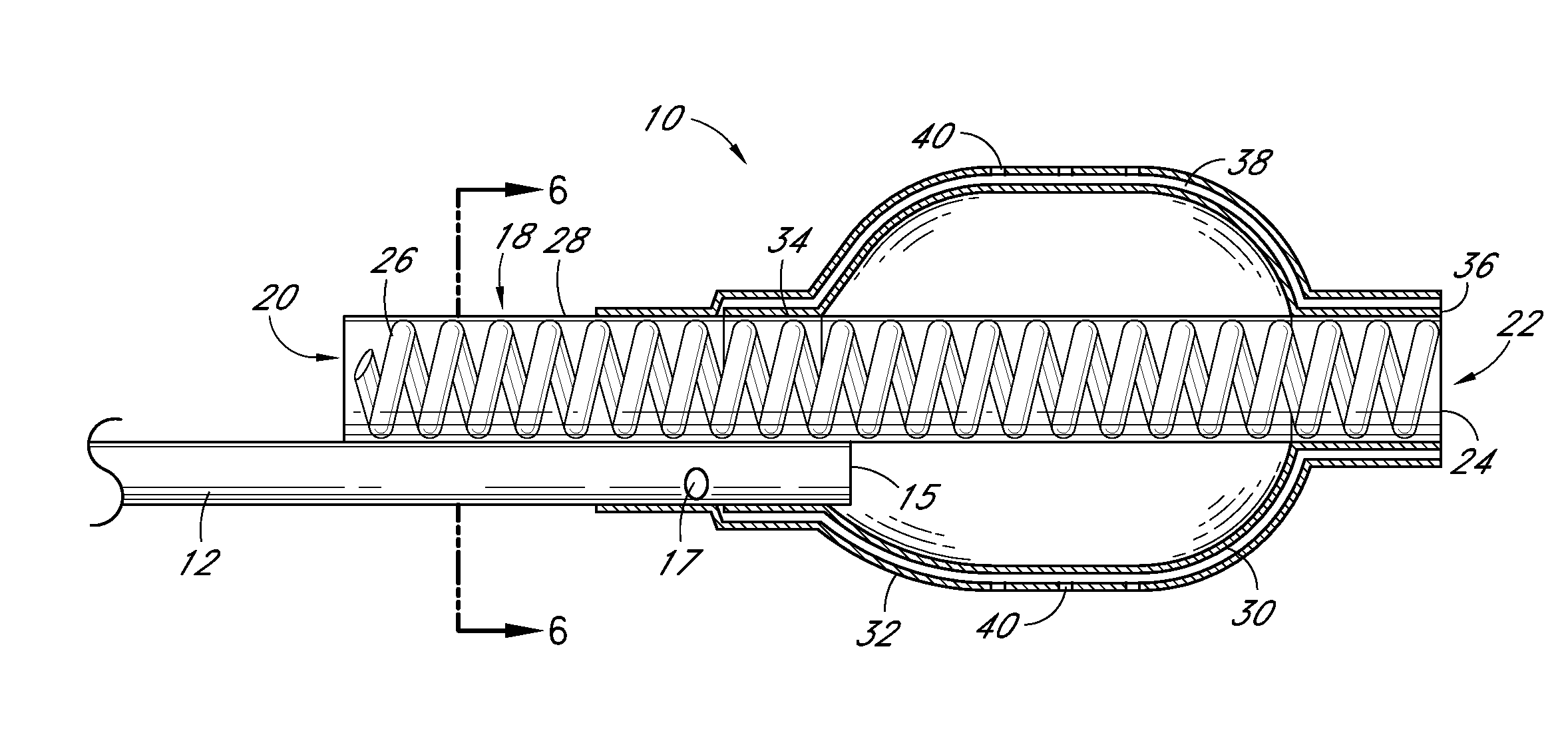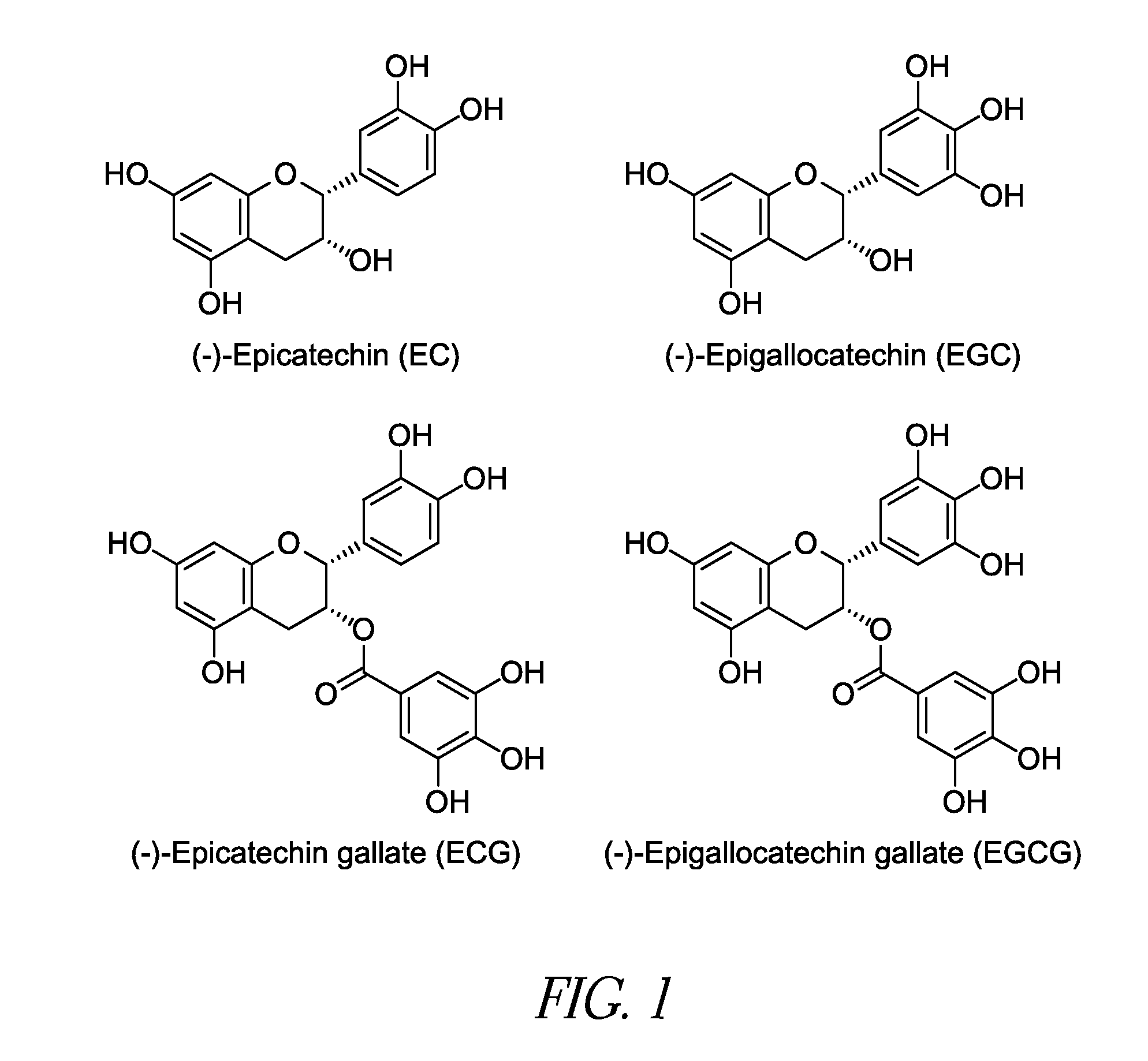Utilization of mural thrombus for local drug delivery into vascular tissue
a vascular tissue and mural thrombus technology, applied in the direction of drug compositions, extracellular fluid disorders, catheters, etc., can solve the problems of endovascular approach, aortic rupture and potential patient death, collagen degradation, etc., to facilitate the reduction of enzymatic degradation of proteins, promote cross-linking proteins, and stabilize the extracellular matrix
- Summary
- Abstract
- Description
- Claims
- Application Information
AI Technical Summary
Benefits of technology
Problems solved by technology
Method used
Image
Examples
experiment 1
[0059]Model Development and Feasibility Testing: The initial experiment consisted of depositing a thrombus layer over a pericardium sample, injecting an aqueous solution of PPE into the thrombus at multiple sites and allowing the PPE time to react with the pericardium. The samples were examined for cross-linking of the collagen and changes to the thrombus associated with the PPE injection. All pericardium samples exhibited increased shrinkage temperature values indicative of increased collagen stabilization.
Shrinkage Temperature (° C.)123456AveSTDMAXMinRun 174.676.575.773.270.974.22.2176.570.9Run 273.472.870.770.870.170.171.31.4273.470.1Run 372.071.572.872.074.975.673.11.7175.671.5Run 475.177.276.876.473.873.875.51.5177.273.8Native69.367.768.669.168.568.968.70.5769.367.7
experiment 2
[0060]Solvent Delivery System: The second experiment used the thrombus pericardium system developed in the initial experiment. The aqueous PPE solution was replaced with an ethanol:water PPE solution. Controls for interaction of the pericardium with the ethanol water solution and thrombus were performed as part of this experiment. The 40:60 ethanol:water solution allowed for a greater PPE concentration (20% compared to 15% in water) but the increase in shrinkage temperatures observed were lower for the ethanol:water PPE solution than those found for PPE in water. The controls indicated no interactions between either the ethanol:water solution or the thrombus and the pericardium with respect to changes in the collagen shrinkage temperature.
Shrinkage Temperature (° C.)Treatment123456AveSTDMAXMinRun 1EtOH68.267.666.767.367.567.667.50.4968.266.7Run 2PPE70.071.071.470.070.970.470.60.5771.470.0Run 3PPE72.472.473.072.773.973.072.90.5673.972.4Run 4Blood68.268.168.267.667.868.168.00.2468.267...
experiment 4
[0062]Evaluation of Delivery and Imaging Systems: The fourth experiment utilized samples similar to those used in the first three experiments. A delivery system was created consisting of a narrow gauge tube (5 Fr hollow catheter) with multiple holes with the end of the lumen plugged. Sufficient intact tubing was included to allow insertion of the irrigation portion of the catheter through the thrombus and into the interface between the thrombus and pericardium. A contrast media was used to image the injection of PPE in real time. A 19.4% PPE solution was used and diluted 50% with the contrast media. An open ended non-irrigation catheter and injections without contrast agent were also tested as controls. The contrast media had a positive impact on the collagen shrinkage temperature results. Samples treated with the PPE—contrast media solution had higher and more uniform increases in collagen shrinkage temperature than did the same catheters without the contrast media.
PPEShrinkage Tem...
PUM
| Property | Measurement | Unit |
|---|---|---|
| pH | aaaaa | aaaaa |
| pH | aaaaa | aaaaa |
| thick | aaaaa | aaaaa |
Abstract
Description
Claims
Application Information
 Login to View More
Login to View More - R&D
- Intellectual Property
- Life Sciences
- Materials
- Tech Scout
- Unparalleled Data Quality
- Higher Quality Content
- 60% Fewer Hallucinations
Browse by: Latest US Patents, China's latest patents, Technical Efficacy Thesaurus, Application Domain, Technology Topic, Popular Technical Reports.
© 2025 PatSnap. All rights reserved.Legal|Privacy policy|Modern Slavery Act Transparency Statement|Sitemap|About US| Contact US: help@patsnap.com



